We were done traveling around Bolivia and couldn’t wait to cross the border into Peru. The only problem was that we were stuck in Bolivia at Lake Titicaca. Peruvian miners were on strike (again!) and the border crossing was closed (again!). The miners created a blockade with boulders on the road to prevent vehicles from passing.
With our bus tickets in hand we were forced to spend another day in Bolivia, along with everyone else trying to leave, and it was impossible to find out exactly what was going on. There were a lot of stressed-out backpackers but since we had time on our side, we pretty much just rolled with it.
Luckily, we only had to wait one additional day. When we finally boarded the bus we all crossed our fingers and hoped that we would actually make it through the crossing. The big rocks and boulders lining the sides of the road near immigration were blatant visual reminders of the contention at the border the day before.
When we finally got our passports stamped in Peru, we both let out a deep sigh of relief and I did a happy dance. Bolivia was interesting and definitely exceeded our expectations, but the country was also hard and edgy and we were ready to move on. Hola, Peru!
Puno
Four hours later, our bus pulled into Puno, the gateway city to Lake Titicaca. We checked into our hotel and booked a boat tour for the next day to explore the Uros Floating Islands in the lake.
When I was in 4th or 5th grade, I loved reading “National Geographic for Kids” each month (thanks, Grandma Connolly!). I remember seeing photos of Peruvian kids and their families living on floating islands, and at the time, it blew my ten-year-old mind. I’ve carried this memory for a long time and couldn’t wait to visit the islands in person. Despite its reputation for being very touristy, it felt important for us to experience this unusual and historical location.
Uros Floating Islands
Morning came way too soon. Wearing all of our warm clothes layered over tee shirts we hopped into our tour van at 5:00 AM. We drove down to the docks and boarded our boat as the sun rose over the lake. The cluster of islands looked very tranquil off in the distance.
The Uros are a pre-Incan people living on a cluster of floating Islands in Lake Titicaca located only 5K from Puno. Originally created as a safe heaven to escape the brutal Incas, today the community of islands are maintained to educate the world about their unusual and highly resourceful habitat.
Made from reeds growing in the lake, the islands are continually decomposing. Every three months or so the rotting reeds need to be reinforced or replaced. It’s a constant effort to maintain the structure of the islands. The base of the islands are comprised of dense layers of mud and organic material, which are then anchored to the bottom of the lake. Fascinating! Walking on the islands felt like walking on a giant waterbed.
The reeds are also used for tea, medicine, and toothpaste. We all chomped on reeds for breakfast.
It was more than a little disheartening to see the little kids “working” the tourists. This four-year-old girl was trying to get Harry to buy a piece of candy that another visitor had just given her.
Yes, visiting the Uros Islands was a very touristy experience. But we chose to look at it as a lesson in perseverance, survival, and creative thinking. ‘Living Museums’ are definitely a colorful way to learn about an important slice of history.
Taquile Island
After the Uros Islands, we took a boat ride for a few hours on beautiful Lake Titicaca to another island called Taquile. We hiked at high altitude from one end to the other with our guide, who taught us about the island’s unique way of life. We ate an authentic lunch of rice and trout at 13,000 feet.
Taquile is a “real” working island with 2,000 inhabitants. The land is parceled out to maximize usable space and crops are rotated annually. The island has been practicing sustainable agriculture long before it was ever a buzzphrase. We were impressed with how the community seemingly worked together to maximize the efficiency of the land. Survival fosters creativity and resourcefulness, indeed.
Onward to Cusco
Our first few days in Peru were fantastic! I immediately noticed that the locals seemed happy and I loved hearing laughter on the streets. Lake Titicaca was incredible and we were pleased to have experienced its magic on both the Bolivian and Peruvian sides. Next up: Cusco and the Sacred Valley.

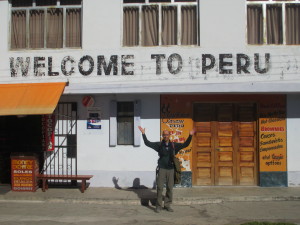



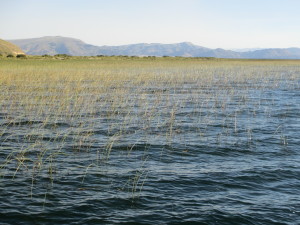

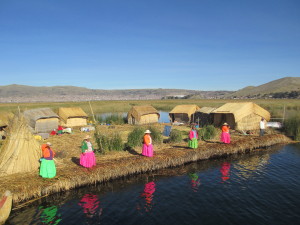
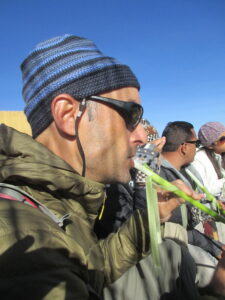

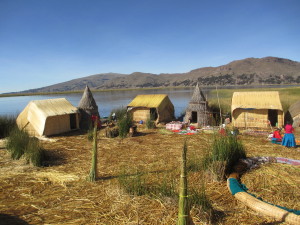
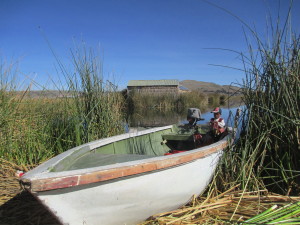
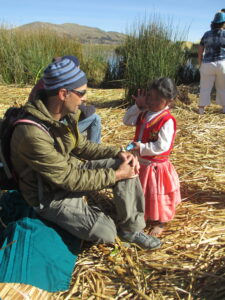
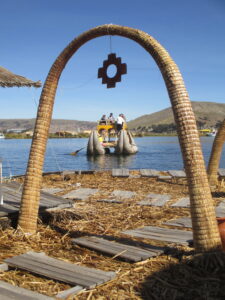
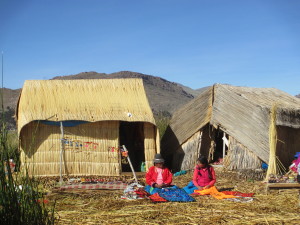
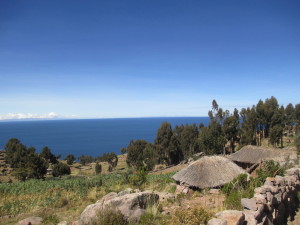

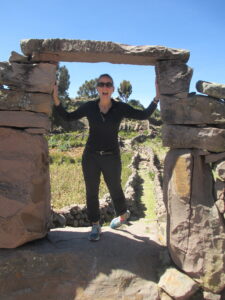
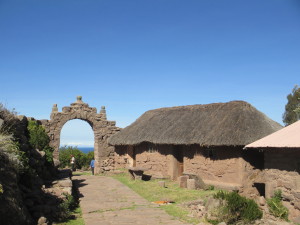

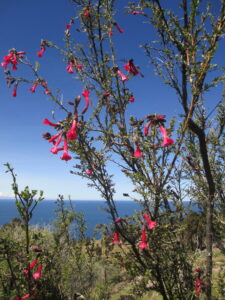
Yay! Hola Peru!!
As always, lovely photos to go with the engaging descriptions of the sights and your travels. Love, Lisa
Thanks Lisa, you’re the best!